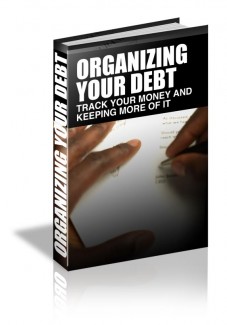 License Type: Private Label Rights
License Type: Private Label Rights  File Size: 3,089 KB
File Size: 3,089 KB File Type: ZIP
File Type: ZIP
 SKU: 53349
SKU: 53349  Shipping: Online Download
Shipping: Online Download
Ebook Sample Content Preview:
Chapter 6: Direct Deposit
Synopsis
Many employers have direct deposit or are catching on. Even Unemployment Compensation provides direct deposit as a choice to receive benefit checks. On payday, the amount of your paycheck arrives in your account and is promptly available.
Directly In The Bank
Direct deposit enables you to handily move money electronically without mailing or signing any checks over to the bank. With direct deposit, your money seems to get to your account faster. When you utilize it for your paycheck, you won't have to go to the bank to cash or deposit your paycheck ever again.
Here's how to establish direct deposit:
Get hold of the originator of the payment. For instance, if you want your paycheck to be direct deposited, get hold of the Human Resources or the Payroll department of your company. The United States Government offers direct deposit for Social Security payments and tax refunds; get hold of them directly about this service. A few investment and insurance payments might also be directly deposited. Get hold of whoever will be paying you to ask about direct deposit.
Next complete a direct deposit form. This ought to be provided by the organization or person that is paying you. You'll need your bank's routing number, which is published on your checks or can be gotten from your bank. It might also be called an ABA number or a 'routing transit' number, and is a singular identifier for your certain bank. You'll in addition need your account number, which describes your certain account at that certain bank. You are able to have the funds set up to direct deposit into your regular checking or savings account, or establish a special account for these funds. Finally, the form might require the physical address of the bank to which payment ought to be sent, even though it will be sent out electronically. Additional required info might include your name, address, telephone number, or social security number.
Now you send off the form to the payor. Send this form back to the organization or person that will be paying you. A few in addition call for a voided check to verify that your routing number and bank account number is right. Make certain to clearly mark this check as VOID prior to sending it. A few companies might also be set up to take this data online or over the phone.
Direct deposit is a handy way to get your money. With just a couple of short forms, you are able to wipe out a lot of paperwork and fuss later on. You'll never lose a paycheck or unintentionally wash it in your pants pocket again, as there are no paper checks to be lost or stolen. The payments will be in your account without you having to make a trip to the bank to deposit the check.
It generally takes a couple of weeks to institute and is well worth the wait. All the same, you still should get a payment stub from your employer or person paying you, listing the itemized deductions for that period or the amount and intention of the check.
Chapter 7: Acquire Overdraft Protection
Synopsis
Many banks have a service where, if you run the chance of bouncing a check, the money will come from a different source. For a token fee, the bank will link your checking account to a savings, money market, or charge card so the plethora of bouncing a check will be avoided.
Protection
It only takes a moment or two to maintain the serenity that overdraft coverage can provide.
You should know however that beginning soon, banks and credit unions will no longer be allowed to bill overdraft fees unless clients sign up for the service. Do nothing, and you may have a purchase declined at the register. On the other hand, you will not find yourself burdened with unforeseen fees.
With fee - founded overdraft services, your bank will back you when a debit card buy or ATM withdrawal goes past the sum of money in your current account. Banks state this service saves clients from embarrassment and allows for a quick source of emergency money. However the price of saving your dignity can be high. As most banks bill a flat fee for overdrafts, a $2 overdraft for a cup of coffee may cost you $35. And once you've passed your limit, every buy you do might have a fee.
In the past, a lot of banks automatically listed clients in overdraft coverage. But under fresh federal rules, beginning July 1, banks will be expected to get new customers' permission prior to charging fees to back ATM and debit card overdrafts. Beginning Aug. 15, they will be banned from billing overdraft fees to existing clients unless they choose the service.
You should know that, there are other, less-costly means to avoid having your debit card declined at the supermarket, including:
Associate your checking account to a savings account. A lot of banks and credit unions provide this service for clients who have savings accounts. If you overdraw your checking account, revenue in your savings account is applied to cover the transaction. Banks commonly charge a fee to shift the money, but it's commonly $5 to $10 — a good deal lower than the fee billed by standard overdraft service programs.
Associate your account to a charge card. In this case, an advance from your charge card will be utilized to cover the overdraft. You'll pay interest — and the rate for charge card advances is commonly higher than the rate for purchases — However if you pay the balance off fast, you'll likely still pay less than you'd give in overdraft fees.
Establish an overdraft credit line with your bank or credit union. You'll need to apply for a credit line, and clients with mediocre credit might not qualify. However if you're eligible, this may provide a much less expensive sort of overdraft protection than fee-based coverage.
Establish low-balance alarms. Knowledge is the most efficient means to protect yourself against overdrafts. A lot of financial institutions will send you an e-mail or text once your balance arrives at the danger zone.
Instead, regularly monitoring your checking account will help you prevent spending money you don't have. You might want to set up an online account and review it daily. That sort of examination will bring you face to face with the realism of your spending.








